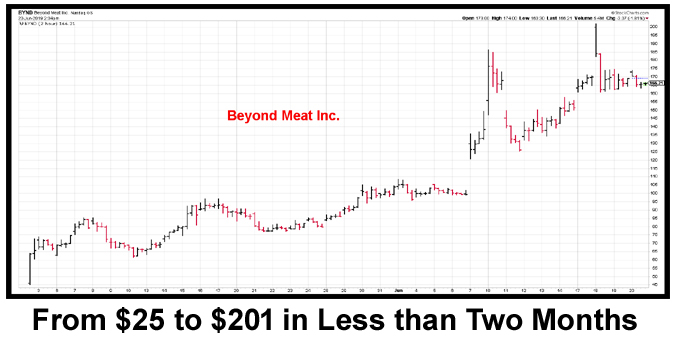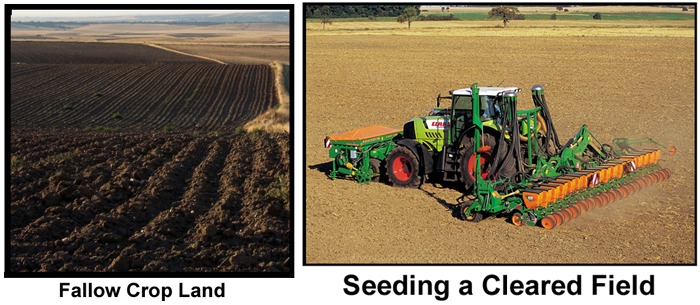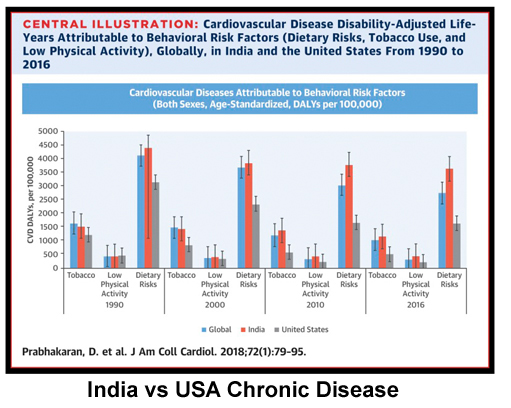Is it a Fad?
Column #200 
A fad is “an intense and widely shared enthusiasm for something, especially one that is short-lived and without basis in the object’s qualities; a craze.” Fads are relatively common. I’m sure you remember these: car tailfins, barbie dolls, coonskin caps, pet rocks, boom boxes, beanie babies, llamas, and ostriches.
The food business has many fads. It seems a different diet is in vogue every year. Food labels have had their days in the limelight too. They include terms such as low fat, gluten free, low salt, cholesterol free, natural, hormone free, organic, antioxidants, Omega-3, and free range. Food and drink hot buttons include TV dinners, bacon, margarine, gelatin, bottled water, energy drinks, fondue, cereals, oat bran, etc.
So what’s today’s biggest food fad and is it with or without basis?
Plant-Based Meats
You may have guessed it. Plant based-meats are all the rage. Even the largest meat processing giants (Tyson, Cargill, ABP Foods, Perdue Farms, and others) are racing to get in on this powerful fad. Amazingly, their positions are: “If you can’t beat ’em, join ’em, right?” Yes, Tyson’s past CEO actually said that.

The lure of easy money is addictive. On May 2, 2019 Beyond Meat went public at $25 per share. It touched $201 on June 18th and at that moment the company was priced at $12 billion on projected 2019 sales of $210 Million. Compare that to Tyson which has a market capitalization of $28.1 billion on $40 Billion in sales. That’s an example of powerful emotions running amuck. Unfortunately, today’s plant-based meat mania may well be one of the worst fads to hit the food industry since hydrogenated oils. Those nasty oils, which are still used today, are similar to today’s plant-based meats in that they were promoted with myths! Let me explain by answering the following questions:
● What are the ingredients in plant-based meats?
● Are plant-based meats nutritionally similar to grass-fed beef?
● Is growing peas, canola, and rice more environmentally friendly than raising grass-fed beef?
● Is a vegetarian diet healthier than one that incorporates meat?
Beyond Meat’s founder and CEO is Ethan Brown, a 16-year veteran vegan. He says he routinely tests real meat for taste and then spits it out. Wow, talk about disrespecting a properly harvested animal! As you may image, people with mindsets like that are vegan promoters who delight in unleashing PETA and vegan scaremongering tactics in their sales pitch–no matter how egregiously inaccurate the claims may be.
Ingredients
In order of quantity, the ingredients in Beyond Meat are: Water, Pea Protein Isolate, Expeller-Pressed Canola Oil, Refined Coconut Oil, Rice Protein, Natural Flavors, Cocoa Butter, Mung Bean Protein, Methylcellulose, Potato Starch, Apple Extract, Salt, Potassium Chloride, Vinegar, Lemon Juice Concentrate, Sunflower Lecithin, Pomegranate Fruit Powder, and Beet Juice Extract (for color).
This is the epitome of an ultra processed food. It’s plant-based, but there’s not one whole-food ingredient. It’s basically extracted plant proteins and fats. I have not found any data regarding its Omega-6 to Omega-3 essential fatty acid (EFA) ratio. But the ingredients imply the ratio is fairly high, probably more than 10:1.
Nutrition
The Beyond Meat nutrition label is very similar to beef. The company likes to show these comparisons:
But the FDA “legally mandated” nutrition labels on foods are next to worthless. Actual nutritional characteristics require a very extensive chemical analysis. In Peter Williams’ study of grass-fed red meats titled “Nutritional Composition of Red Meat,” he lists more than 50 nutrients in a very abbreviated listing. Further analysis could be expanded to include well over 1,000 nutrients. So to list seven attributes for comparative purposes is actually meaningless. Also keep in mind that the beef analysis above is for grain-fed beef, not grass-fed beef which has way more nutrient density that causes its comparatively gamey flavor.
Part of the plant-based meat sales pitch is based on discredited myths such as saturated fats and cholesterol cause heart disease, meat causes cancer, and a high fat diet causes people to be obese. They don’t talk about EFA balances and the historical role meat played in the development of the large human brain. They certainly do not point out that grass-fed meat provides 100%, or nearly 100%, of every nutrient a human requires for optimal body function.
Environmentally Friendly
Beyond Beef demonizes all livestock raising as bad for the environment and the animals while ignoring the impact farming has on the environment. Growing peas, canola, and rice starts by clearing the land and adding other farming inputs including water. It takes equipment and energy to grow grain and vegetable crops. Fallow fields, a virtual necessity, release carbon. A lot of farm land is fallow during the winter. The plants that do eventually grow will remove carbon from the atmosphere and store it in the soil carbon pool. But the carbon is released again later during processing, digestion, and the next cropping cycle.

As everyone in California knows, vegetable, fruit, and nut farming requires water. The California cropping industry is almost totally dependent on irrigation as it is in many places in the USA. Irrigation for cattle on pastures and rangeland is not nearly as critical. In fact, probably 95% of all pasture and rangeland is not irrigated and relies solely on natural rainfall. Properly managed pastures always have some forage cover even in the winter. Compared to raising grass-fed meats, the raising of vegetables is just as hard on the environment as is raising corn to feed grain-fed livestock. And no other form of food production can compare with the utterly natural symbiotic relationship that livestock have with grasses.

Vegans
Do we want to be a nation of vegetarians? We have health issues here in America already from too much grain and sugar consumption. But do you realize that India, a country that is mostly vegetarian, is worse off! In his report, “Cardiovascular Diseases in India Compared With the United States” Dorairaj Prabhakaran stresses how cardiovascular disease, diabetes, diarrheal disease, and lower respiratory tract infections rank India as one of the sickest nations on Earth!

The typical vegan diet in India consists of whole-wheat flatbread, rice, and lentil-based stew. This is usually accompanied by any combination of vegetable dishes with an array of condiments and garnishes, typically chutneys, relishes and pickles. They usually drink plain water with meals or some drink coffee with condensed milk. Indian desserts tend to be very sweet, with various versions of fudge, rice pudding with spices and raisins, and doughnut-like balls soaked in syrup. The favorite vegetables are potatoes, eggplant, green peas, cauliflower, and onions. Next are tomatoes, carrots, squashes, mushrooms, okra, plus spinach, tops of radishes, beets, and fenugreek. Indians eat fresh fruit as snacks. Most popular are mango, papaya, pineapple, guava, melon, jackfruit and pomegranate. If Indians do eat meat, it is a very small portion of the meal.
The people who are chasing after this plant-based meat fad are not thinking clearly. It is a fad. Now the question is, how long will it be before the realization sinks in that plant-based meats are simply another man-made attempt to replicate a whole food that mankind has been eating for about four million years? And in the process of switching from real meat to ultra processed imitation meat, how much sicker will our nation become?
To your health.
Ted Slanker
Ted Slanker has been reporting on the fundamentals of nutritional research in publications, television and radio appearances, and at conferences since 1999. He condenses complex studies into the basics required for health and well-being. His eBook, The Real Diet of Man, is available online.
Don’t miss these links for additional reading:
Nutritional Composition of Red Meat by Peter Williams
Fake Meat Is the New Kid on the Stupid Block by Alan Newport
The Most Popular Fads from Decades Past
Pea Protein Powder: Nutrition, Benefits and Side Effects by Erica Julson, MS, RDN, CLT
Typical Food of India by Joanne Thomas from USA Today
Planting Canola by Oklahoma State University
Field Pea Production by North Dakota State University
What’s New with Plant-Based Protein Patties? By Amanda Radke from Beef Magazine
Cardiovascular Diseases in India Compared With the United States by Dorairaj Prabhakaran, MD, Dmab, et al.
Cardiovascular Diseases in India Current Epidemiology and Future Directions by Dorairaj Prabhakaran, MD, DM, MSc, FRCP, FNASc, et al.
Chronic Diseases in India—Ubiquitous Across the Socioeconomic Spectrum by Shivani A. Patel, PhD1, et al.
Beyond Meat: Let's Look at Some Details by Lyn Alden Schwartzer




